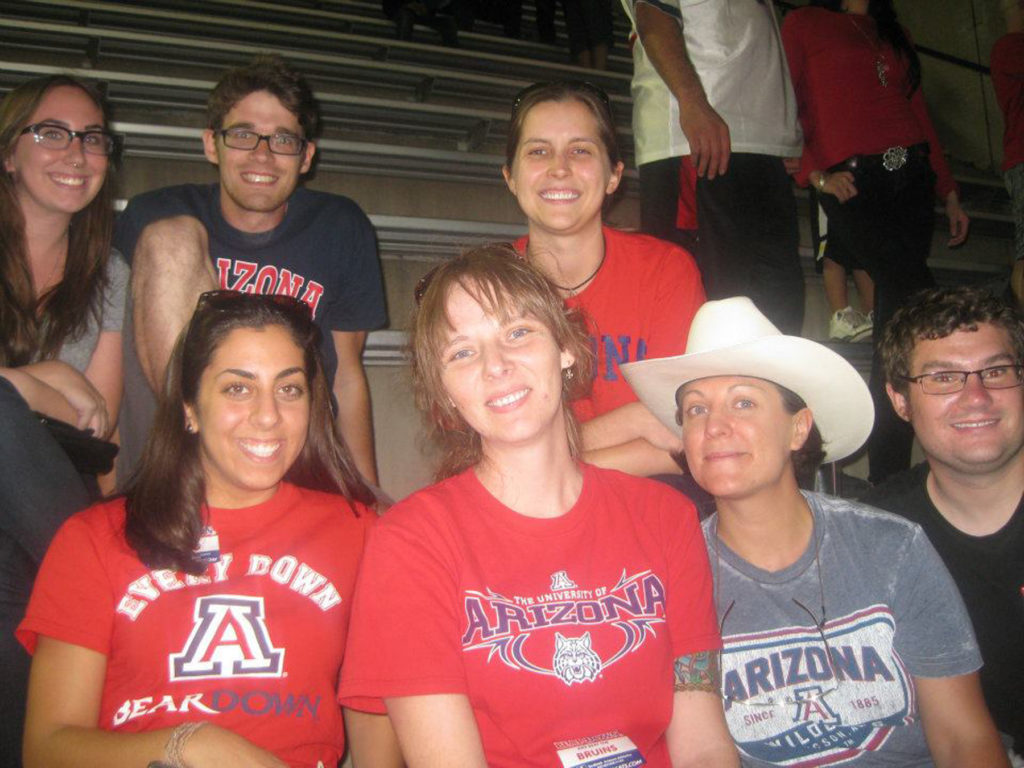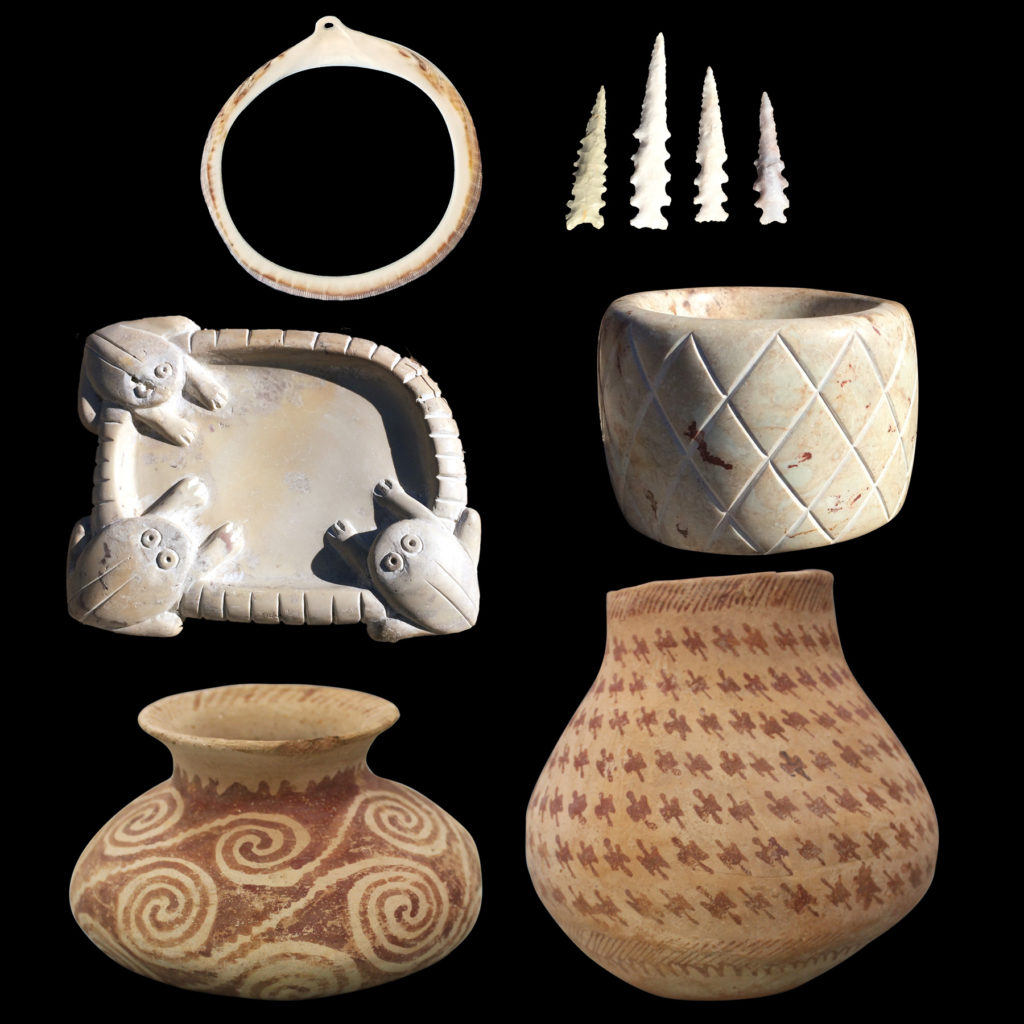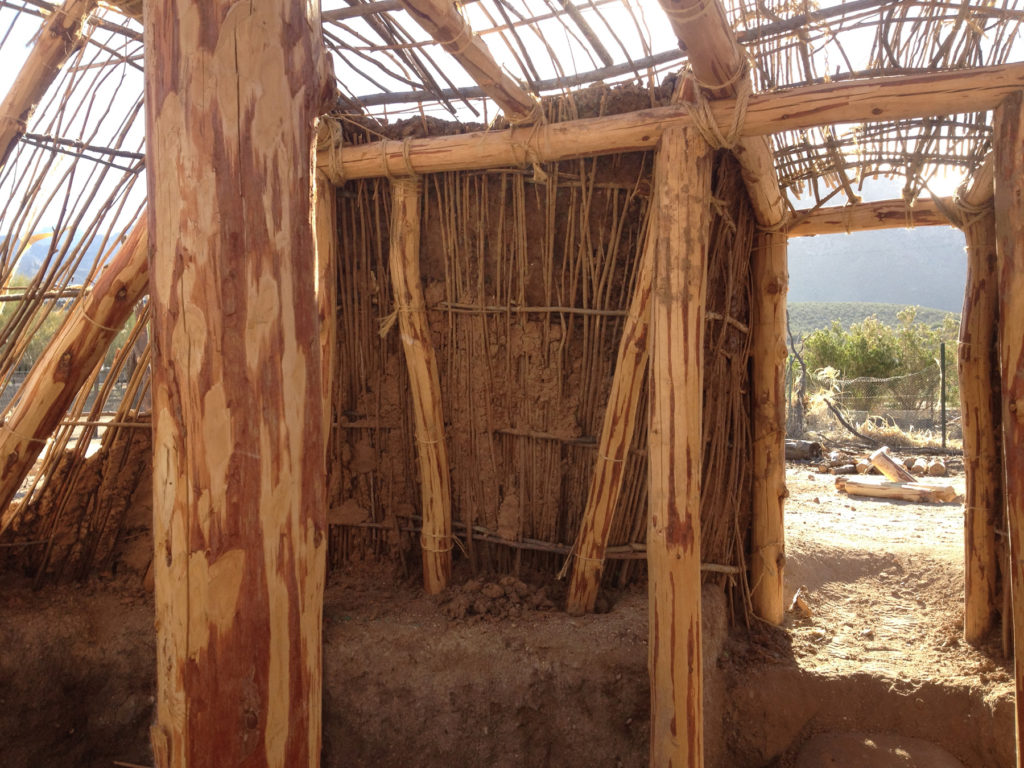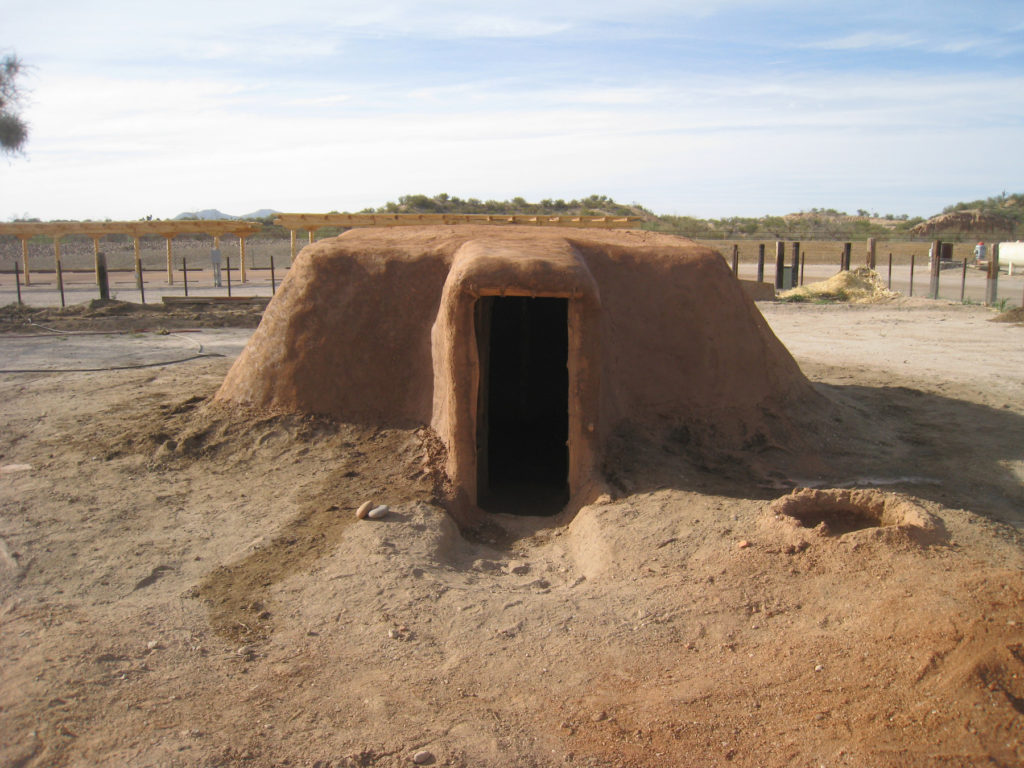- Home
- >
- Preservation Archaeology Blog
- >
- Group Identity and the Hohokam Ballcourt World
(February 16, 2018)—I’ve been thinking a lot about identity lately. Group identity, in particular. We all have them…a lot of them. The great thing about group identity is that you don’t have to choose just one. Identity is an active social construction that is malleable, has many facets, and occurs at varying scales. People can have many identities simultaneously, any of which can be called upon based on the social context. These identities are not mutually exclusive, and we are continually reconstructing and renegotiating them.
Take me, for example:
- I’m white
- I’m Hispanic
- I’m Jewish (culturally)
- I’m non-religious
- I’m a woman
- I’m an archaeologist
- I’m a student
- I’m a professional
- I’m one of those tattooed people
- I’m an American
- I’m an Arizonan
- I’m a Tucsonan (now)
- But I’m from Phoenix (!)
- I’m an artist
This is a partial list of the seemingly contradictory identity groups I belong to. Some of them, I belong to because of who my family is and who I interact with. These relational identities are generated from direct relationships that I have with other people. Other groups, I belong to without necessarily having direct interactions with every other member—“Yes, I’m from Phoenix; no, I don’t know your sister’s friend’s cousin.” These categorical identities are based on perceived similarities with socially defined categories or social roles.
I’ve been thinking about how to apply these concepts to the past. What kinds of group identities might be visible in the archaeological record? And how might we recognize them with the limited set of data available to us?
Part of the answer lies in recognizing the different ways that different types of identity are expressed. Active expressions of identity have high physical and contextual visibility on media designed to convey messages about group membership or ideology—think clothes, hairstyles, body modifications, cars. These are manipulated by individuals who may choose to emphasize or suppress different aspects of identity in order to receive the maximum benefit from specific situations.

Latent expressions of identity have low physical and contextual visibility, representing variations in the ways people do things that are not immediately identifiable. Latent expressions are generally low in message content, especially with respect to large social groups and usually concern culturally specific knowledge that is passed from one generation to the next—think about procedures and processes that might be ingrained in you from your background, even though the product is not distinctive.

During the time of the Hohokam Ballcourt World, (A.D. 750 to 1075), the people who lived in southern Arizona had more group identities than we will ever be able to recognize in the archaeological record. But that shouldn’t stop us from trying. My dissertation research, currently underway, explores:
1) What kinds of group identities might be reconstructed from the archaeological record? How might those identities have intersected?
2) How fluid or persistent were any of those identities over time?
3) How did spatially defined communities articulate with these identities? How did identity structure interaction among such communities?
Archaeologists associate ballcourts—along with a suite of related material culture (made objects, built architecture, and other decisions expressed materially)—with a widespread ideology that might be interpreted as a form of group identity during the Hohokam pre-Classic period. These materials include red-on buff/red-on-brown pottery; formal secondary cremation burials (people were cremated and then their ashes and remains were buried); ornate stone censers/bowls and palettes; distinctive projectile point styles (dart and arrow points); marine shell bracelets/armlets; and of course ballcourts.
At the same time, there is considerable variability in the places, things, and material choices people made that map on to specific valleys, basins, and other sub-regions. The Hohokam Ballcourt World is analogous to the Hopewell or Chaco Worlds, where some patterns are more global and others more local, as people expressed different levels or scales of identities.

My work is looking at active expressions of identity—such as decorated pottery, projectile points, and public architecture, as well as latent expressions of identity—such as temper (materials potters added to their clays to enhance technological attributes), features of architecture associated with everyday life, and preferred sources of stone to make tools. Taken individually and collectively, these avenues might—I hope!—help us differentiate various kinds of group identity in the Hohokam Ballcourt World.

Explore the News
Related to This
-
Culture Hohokam
